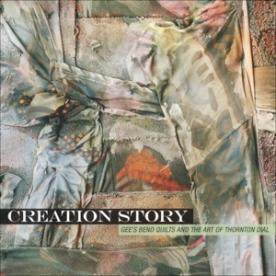Creation Story: Gee's Bend Quilts and the Art of Thornton Dial
Description
Creation Story explores parallels and intersections in the works of Dial and his fellow Alabamians, the remarkable quilters of Gee’s Bend. In the tradition of African American cemetery constructions and yard art, these artists harness the tactile properties and symbolic associations of cast-off materials in creating an art of profound beauty and evocative power. Produced against a backdrop of poverty and racism, these artworks have an appeal that crosses aesthetic, social, and geographical boundaries, earning them wide recognition as being among the most compelling art of our time.
The quilters of Gee’s Bend, a small rural community near Selma, Alabama, use salvaged fabric in orchestrations of strong colors, dynamic patterns, and eccentric geometric shapes. While drawing from classic traditions of American quilt making, their sensitivity to the evocative power of materials and fine balance of optical tension and harmony marks their quilts as truly original. The New York Times has called them “some of the most miraculous works of modern art America has produced.”
Going beyond the beauty and tactile richness of the Gee’s Bend quilts, the densely layered assemblages of Thornton Dial are, in his words, “about ideas, and about life, and the experiences of the world.” A keen observer and interpreter of his times, Dial uses the technique of bricolage—the aesthetic reconfiguring of found objects—to reflect on personal memories, insights into root causes of racism and poverty, and news events and programs he sees on television. The Wall Street Journal has called Dial’s works “tough, beautiful, disturbing, seductive, improvisatory, unignorable, fierce, exhilarating, ambiguous—and much more.” While Dial’s social symbolism contrasts with the inherent abstraction of the Gee’s Bend quilts, the two are linked by an appreciation for the poetic and evidentiary power of raw materials, which they transform into expressions of beauty and truth.
The artworks reproduced in this exhibition catalog are drawn from the extensive collection of the Souls Grown Deep Foundation in Atlanta, Georgia. The 43 color plates are accompanied by illustrated essays by curators Paul Arnett, Joanne Cubbs, and Phillip March Jones.
